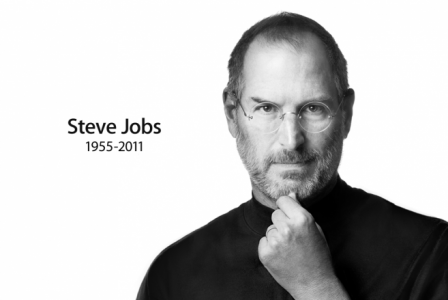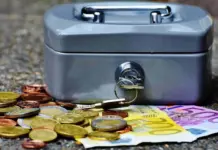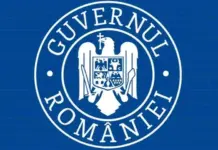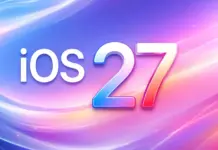Astazi biografia autorizata a lui Steve Jobs a fost oficial lansata in intreaga lume si conform precomenzilor vorbim despre un best seller. Deocamdata in Romania cartea poate fi achizitionata din iBookStore iar in magazinele fizice s-ar putea sa o avem disponibila incepand cu luna martie a anului viitor. Avand in vedere ca foarte multi au reusit sa achizitioneze cartea, mai jos aveti cateva informatii interesante din viata lui Steve Jobs, informatii preluate direct din biografia autorizata realizata de catre fostul editor al Times Magazine, Walter Isaacson.
Se pare ca mama naturala al lui Jobs ar fi dorit sa il dea spre adoptie unei familii de intelectuali dar in final a ajuns in casa unei faimlii normale din California, la Apple majoritatea angajatilor se imbracau mai prost decat oamenii care se ocupau cu intretinerea birourilor companiei Pepsi, plus multe alte lucruri interesante.
- Jobs’ birth mother was sent to San Francisco when she was pregnant with him to arrange a closed adoption, and her only requirement was that the adoptive parents be college graduates. But the adoptive parents backed out after the birth because they wanted a girl, so the parents Jobs did end up with were high school dropouts.
- There was apparently a standoff for weeks because the birth mother wouldn’t sign the adoption papers after learning about their level of education, and only relented when the couple had to promise they would set up an education fund for Steve. She was also holding out hope that her father would die soon so that she could marry Jandali and take her baby back.
- One of the homes Steve Jobs’ family moved into when he was a kid was an Eichler home. Joseph Eichler specialized in clean lines and open aesthetics for common people. Jobs has cited him as a direct inspiration. In fact, he described the clean elegance of those homes as the “first vision for Apple.”
- In 1982, Apple’s interim president Mike Marakkula’s wife told him to find a replacement. Steve Jobs knew he was still too immature to be Apple’s president, so they went for Don Estridge, the man behind IBM’s PC business, which was outselling Apple’s . He turned down Apple’s offer because “he enjoyed being a part of the establishment, a member of the Navy instead of a pirate.”
- At Apple, John Sculley said that most Apple employees were more badly dressed than Pepsi’s maintenance men.
- Sculley described Pepsi’s marketing success with the Pepsi Generation campaign as one in which a lifestyle was sold, an optimistic outlook, not a product.
- Steve Jobs was fascinated by the three hundred pound oak doors at Sculley’s Greenwich mansion, so carefully hung that they swung open with the touch of a finger.
- In 1983, Apple’s ad salesmen would say: “What’s the difference between Apple and the Boy Scots? The Boy Scouts have adult supervision.”
- Sculley’s first meeting with Apple’s management at Pajaro Dunes, California was absolute chaos. Steve Jobs attacked the Lisa team for an unsuccessful product while they openly taunted him about his failure to deliver the Macintosh. During the bickering, a small earthquake rumbled the room. “Head for the beach!” someone shouted. When they all got to the beach, though, someone screamed that a tidal wave was coming, so they all ran the other way. This was a team that needed some management.
- The famous 1984 ad was originally used to rally Apple’s demoralized sales force, who were soundly being beaten by IBM in the PC market and had two products — the Lisa and Apple III — dead in the water. It was only months later that video was broadcast as an ad.
- Steve Jobs knew he had abandoned the hacker spirit, and the Macintosh was a machine that violated many of the spirits of the hacker code: it was expensive, couldn’t be expanded and it took special tools to just open the case. “It was a closed and controlled system, like something designed by Big Brother rather than by a hacker.” The 1984 ad was Steve’s way of reaffirming to himself his desired self-image.
- Sculley got cold feet about the 1984 ad, but when Woz saw it, he was blown away, even offering to pay half the ad rate to get it shown at the Super Bowl out of his own pocket.
- Although Steve Jobs thought Microsoft made terrible applications, Jobs became so enamored of Excel that he made a secret deal with Bill Gates to have Excel exclusively on the Mac for two years. In exchange, Apple would indefinitely license Microsoft’s BASIC and shut down their own team. This gave Microsoft a real lever in future negotiations. Steve Jobs was so confident that he’d locked Microsoft in as an Apple-only developer he said that “we’ll all be dead” before Microsoft would release Excel for IBM PCs.
- When Microsoft announced Windows, Steve Jobs hauled Bill Gates down to Cupertino to scream at him in front of his employees. “You’re ripping us off!” he shrieked. Gates coolly responded: “Well, Steve, I think it’s more like we both had this rich neighbor named Xerox and I broke into his house to steal a TV set and found out you had already stolen it.”
- Steve Jobs’ obsession with aesthetic details could be taken to ludicrous extents. For example, when they built a state-of-the-arty factory in Fremonth to manufacture the Macintosh, Jobs wanted all the machines repainted in bright colors. Apple’s manufacturing director, Matt Carter, fought him on it, because this was precision equipment, and repainting them could make them not work right. Steve persevered, and one of the most expensive machines broke, being known as Steve’s folly.
- Steve’s cavalier attitude towards factory working conditions started early: in 1984, when showing off Apple’s Macintosh factory to the first lady of France, Jobs became angry when more time was spent asking about overtime and vacation them than admiring the fancy machines, causing Jobs to quip: “If she’s so interested in their welfare, tell her she can come work here any time.”
- According to Jean-Lous Gassée, “the only way to deal with [Steve] was to out-bully him.” Gassée once grabbed Steve’s lapel and told him to shut his mouth.
- Burrell Smith (who designed the Macintosh’s motherboard) decided to leave Apple in early 1985, and figured out the perfect way to quit that would “nullify the reality distortion field.” He proposed just walking into Steve’s office, pulling down his pants, then urinating on Steve’s desk. “What could he say to that? It’s guaranteed to work.” Unfortunately, Steve heard about it before hand, and seemed more excited about whether Smith would actually do it than upset about him leaving.
- After John Sculley confronted Steve Jobs about a planned coup Jobs had orchestrated in 1985, he was such a wreck that he came back absolutely shattered, with a stutter that he had conquered in childhood suddenly re-emerging. Sculley’s wife was so upset she drove down to Cupertino and confronted Jobs, where she said: “When I look into most people’s eyes, I see a soul. When I look into your eyes, I see a bottomless pit, an empty hole, a dead zone.”
- After being all but fired from Apple in 1985, Steve Jobs went to Florence, where he fell in love with the paving stones, which came from Il Casone quarry near the Tuscan town of Firenzuola. Twenty years later, Steve was finally able to use this stone in an Apple product: the Apple Store.





























Pare interesanta cartea…cred ca am s-o achizitionez